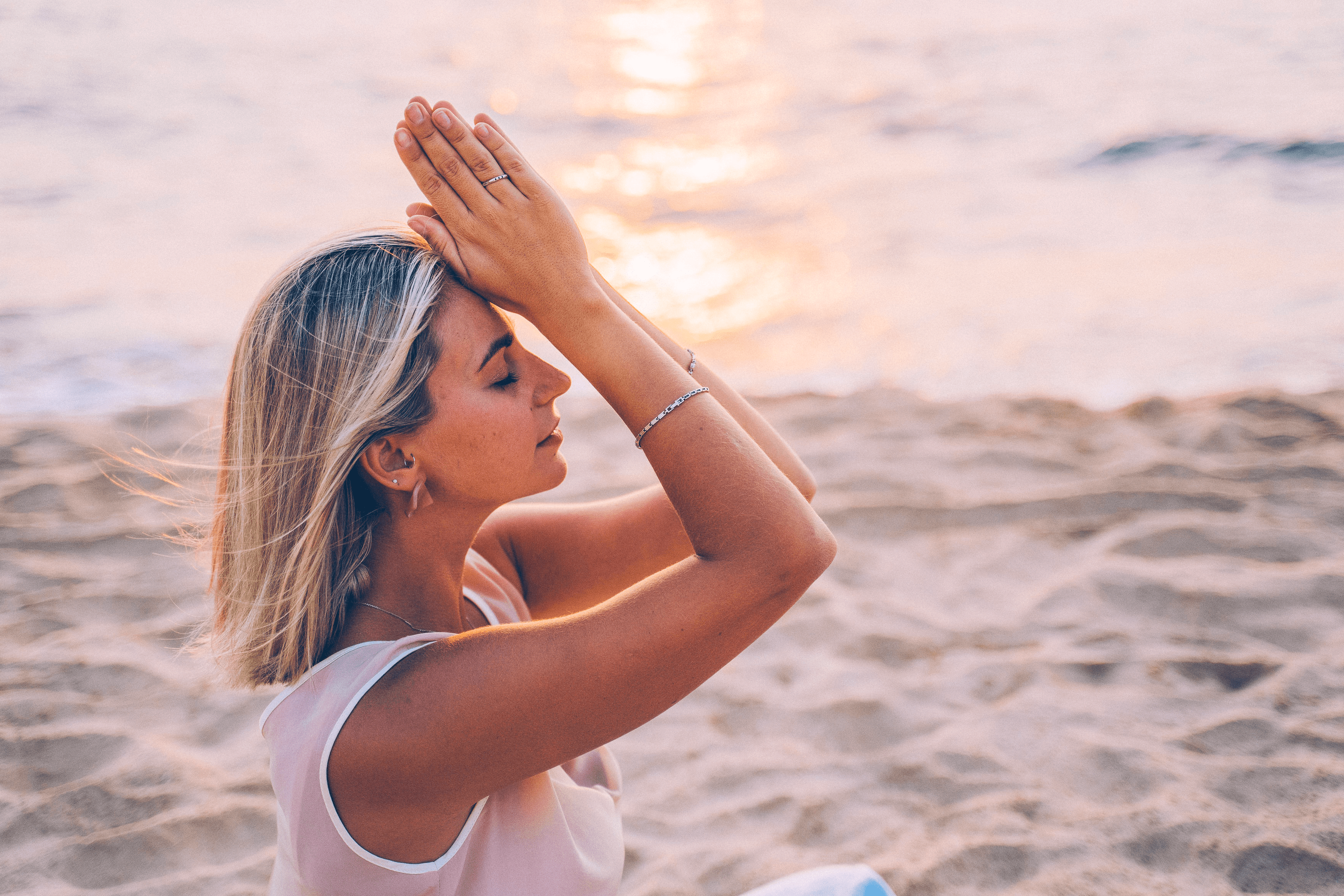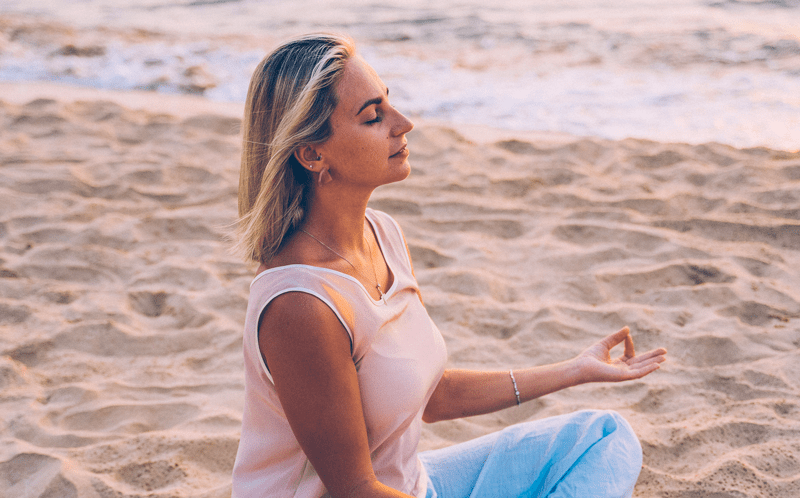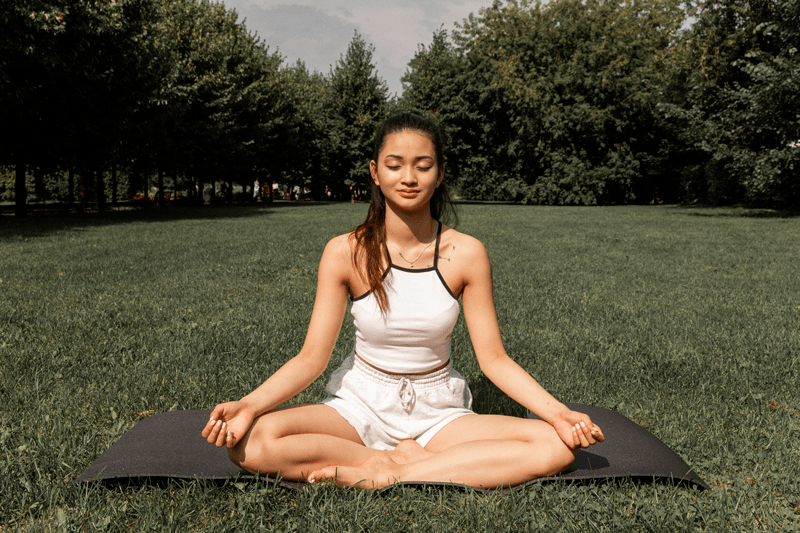Inside peaceOuter strength
Inside peaceOuter strength
Most of us experience some form of stress in our daily lives. Whether from work, looking after children or just keeping on top of things in general, stress is common in today’s modern world.
Did you know that yoga can be a great stress buster and help you to relax and feel calmer? It can also enhance your mood and help you fight feelings of depression and anxiety.
This article will show you how you can use yoga for stress relief and take control of your life so you feel happy and fulfilled every day.

Yoga is an Indian exercise that combines meditation, breathing and stretching different parts of the body.
It is considered to be a spiritual practice due to its roots in Indian philosophy. In the past yoga was thought of as a ‘far out’ exercise, but today people all over the world do yoga to promote their physical and mental state.
The word yoga comes from Sanskrit and means to merge or join. This refers to connecting the breathing, mind and body to function as one.
We’re constantly worrying about things, planning, organising and multi-tasking. This constant need to ‘get things done’ can lead to an inability to relax.
We’re surrounded by screens and mobile devices and never seem to know how to switch off. Have you ever tried to relax but still find yourself checking your phone?
Yoga works on the mind by helping you to empty it of all stressful thoughts and focus on the moment.
Whether you’re worrying about silly little things or major life events, stress can play a big part in affecting your health. Yoga can help you disconnect and focus on the ‘bigger picture’.

When you do yoga you allow your body and mind to relax and let the stress and worries flow away. The different postures, stretching techniques and breathing exercises work together to calm you.
Yoga is about appreciating your body and having the right mindset. Looking after yourself and taking the time to slow down and reduce stress will benefit you more than you might realise.
You don´t have to be ultra-flexible to do yoga – your body will gradually get used to the exercises and you will be able to perform different postures.
Some of the best yoga poses to relieve stress and achieve inner peace are easy to practise and can help calm you in moments. Why not try these poses recommended by the Yoga Journal* when you feel like your fuse is short and you can´t take much more stress?
These are only a few poses you can use with yoga for stress and anxiety and once you become familiar with them you can try more advanced exercises.
You can do these yoga for stress poses at specific times of the day (first thing in the morning to get ready for the day or before going to bed to help you sleep).
However, if you’re in a stressful situation and need to calm down you can try any of these poses on your own. Of course, if you’re in the office and you suddenly start lying on the floor in strange positions your colleagues may think you have ‘lost the plot’ completely. But some offices have spaces where you can go to chill out and you could do your stress-relieving exercises here. You might find your colleagues want to learn how can yoga help with stress and join in. You could end up being the office yoga guru!
Breathing deeply can help calm your mind and is a quick way to reduce your anxiety levels. Try these yoga breathing techniques for stress when you can´t do full exercises:
Being able to breathe well is a skill you may need to learn. Once you know how to breathe correctly you should start to feel the benefits as you will feel calmer and more tranquil, especially when faced with difficult situations.
Think about how you can feel your heart beat fast when you are anxious or panicking.
Heart coherence meditation is a breathing exercise used to combat stress. You can do this anywhere to reduce stress immediately**. This is how to increase heart coherence:
Heart coherence is a simple and effective way to calm your feelings. You control the beating of your heart by slowing it down and reducing your stress. This is a good exercise to do during the day but also at bedtime to help you sleep better.

There are times in our lives when we just don´t know where to turn to relax. The slightest little thing may turn you into an emotional heap, such as missing the bus ordropping your favourite mug and it breaking. Before you know it you’re in floods of tears or shouting at someone who doesn´t deserve it.
Restorative yoga for stress is a gentle form of yoga used to relax the body and still the mind. It can take you into a deep mode of relaxation and to a place where you feel safe and confident and able to cope with whatever life throws at you.
Your body is a complex organ and can show signs of stress in many different ways. From headaches to feeling tired or getting eczema, these are only a few ways the body reacts to stress.
A lot of research has been performed on stress inflammation and yoga practice and it has been found that regularly doing yoga can minimise inflammation. Yoga can help your body fight inflammation and stressful conditions by limiting the situations that cause the stress and therefore the condition.
If you have a stress-induced illness why not try yoga to see if your condition improves?
You should combine this form of exercise with a healthy diet. An effective way to find stress relief through your diet is to include products containing Lactium® which has been proven to soothe and calm babies and adults.
When you go shopping check the labels for Lactium-based products (such as milky drinks) and boost your fight against stress.
You may find taking up yoga is one of the best decisions you’ve ever made for your well-being. Why not try it and change your life for the better?
For more information on the benefits of Lactium® the natural ingredient for a stress-free life, contact us!
For more information